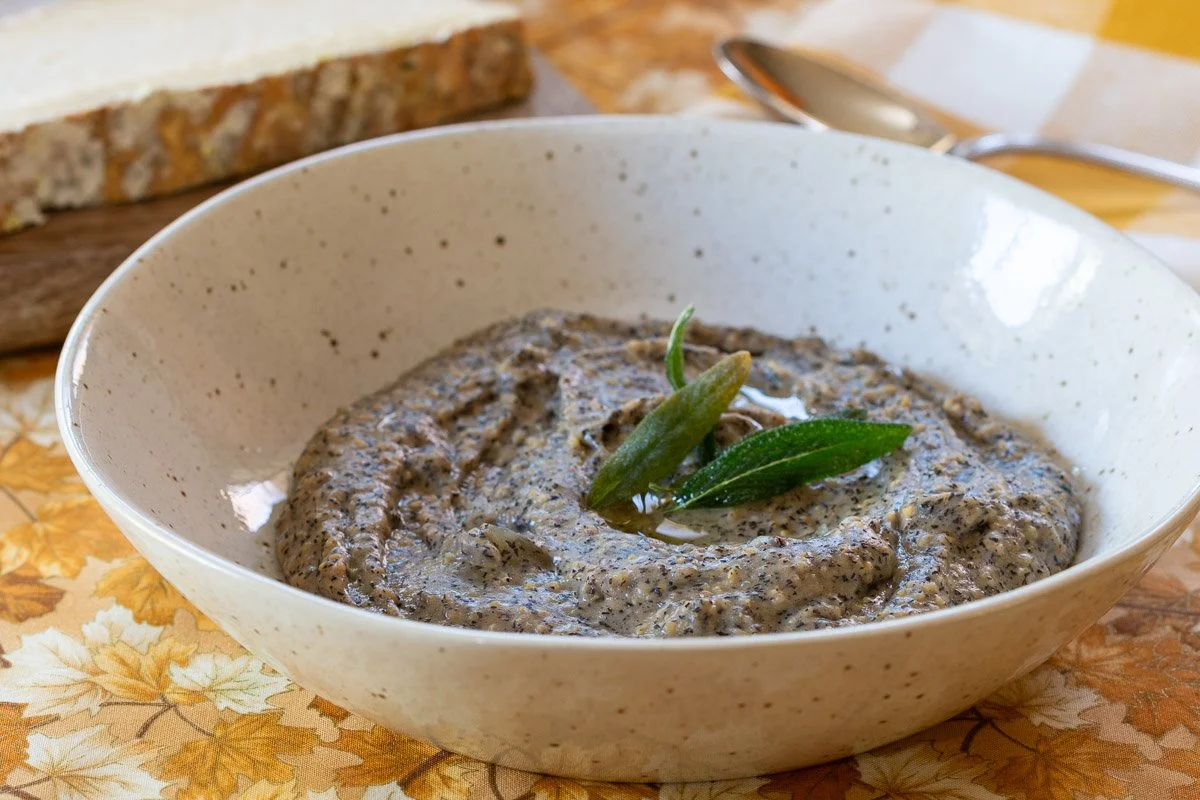We are big polenta eaters at my house, especially in cool weather. I tend to make it on the lean side, without gobs of butter and cheese, but there’s no denying how tasty it gets when you stir in some calories. Years ago, my husband and I often ate dinner at a late-night café near our house where all the food was prepared on a hot plate. Even with this limitation, the cook made fabulous polenta with roasted tomatoes on top and Gorgonzola melting in the crevices. I recreate it at home on occasion (minus the hot plate) but my new obsession is polenta taragna—part buckwheat flour, part cornmeal. It’s not for dainty appetites, but with fresh butter and a fragrant Italian melting cheese like Primo Pascolo (pictured above), this rustic dish achieves Michelin star status—at least in my eyes.
Made by a fifth-generation family creamery in Italy’s Piedmont region, Primo Pascolo (“first pasture”) resembles Fontina but with a softer and more supple texture; it’s almost springy. The importer describes it as “divinely doughy and fun to eat,” which echoes my impressions. The aroma is earthy, mushroomy, herbal, vegetal—supposedly the scent of a spring meadow (hence the name) but the wheel I sampled was beefier than that. Made with raw milk, it has mouth-filling flavor, abundant salt and a pleasantly tangy finish. It’s a “wow” cheese. Eat it slowly.
And what a rind—crusty and captivating, with a riot of orange, yellow, white and gray fungi confirming that this wheel is alive. I rarely see such a multiplicity of microbes on domestic cheeses.
If you’re going to melt it into polenta taragna (recipe below), be sure you cut off a nice, fat slice to enjoy on its own with a glass of red wine, maybe a Barbera d’Alba to keep it local.
Look for Primo Pascolo at these retailers.
Polenta Taragna with Brown Butter and Sage
This hearty specialty of Piedmont and Lombardy is prepared with a blend of buckwheat flour and polenta. The ratio varies according to taste, but many recipes call for two-thirds buckwheat flour. That’s what I used for the version pictured here, but you might start with a fifty-fifty ratio if you’re not familiar with the robust flavor of buckwheat. The packaged polenta taragna mixes I’ve seen are light on the buckwheat. Avoid instant or quick-cooking mixes if you want an authentic taste. Polenta taragna should take at least 30 to 40 minutes to cook, with frequent stirring. Serve with sausages, sautéed mushrooms or steamed cabbage. Leftovers? No problem. Cut onto slabs and arrange tightly in a baking dish. Cover and bake in a hot oven until soft and sizzling. Let settle about 15 minutes before serving.
Browned butter and fried sage garnish:
2 tablespoons clarified butter or ghee
1 dozen large fresh sage leaves
Polenta:
¾ cup buckwheat flour (I used Bob’s Red Mill)
½ cup polenta (not instant)
2 teaspoons sea salt, or more to taste
5 tablespoons unsalted butter, in small pieces
1/3 pound Primo Pascolo, Fontina Val d’Aosta or Taleggio, in small cubes
Make the garnish: Melt the clarified butter in a small saucepan over medium-low heat. When it is hot, fry the sage leaves 3 at a time. They will sizzle at first; when they largely stop sizzling, they are done. Transfer them to paper towels to cool and crisp. Adjust the heat to keep the butter from burning, but by the time you finish frying the sage leaves, it should be nutty-smelling and lightly browned. Set aside.
In a bowl, whisk together the flour and polenta. In a heavy saucepan, bring 5 cups of water to a boil with the 2 teaspoons salt. Gradually add the flour mixture, whisking constantly to avoid lumps. Adjust the heat to maintain a slow but steady simmer. When the mixture is too thick to whisk, switch to a wooden spoon. Cook, stirring frequently and scraping down the sides of the pan with a rubber spatula, until the mixture is smooth and no longer gritty, about 40 minutes. Add boiling water if needed to thin. Polenta taragna should be flowing, neither soupy nor stiff.
Add the butter, stirring until it melts. Remove the pan from the heat and add the cheese. Stir vigorously until it melts, then taste for salt. Divide among 4 bowls and top each portion with a drizzle of browned butter and a few of the sage leaves.
Serves 4


